by Daniel Galhardo
“The sea-run form ascends rivers of Japan in May when cherry trees are in bloom and therefore is known as the sakura masu, or cherry salmon”.
As part of my mission of spreading the tenkara story to anglers outside of Japan, I have made a point to visit Japan every year. I’m currently on my 6th “pilgrimage” to the country, meeting with teachers who share with me their techniques, their insights into tenkara, and of course their favorite fishing spots where we search for trout. There are two main types of trout that we target in Japan: the amago and yamame. There is also a char, the iwana (side note, most tenkara rods we offer at Tenkara USA are named after Japanese trout/char).
The amago and yamame are virtually identical, except that the amago features red spots thorough its body while the yamame does not. The yamame and amago are also referred outside of Japan as “cherry salmon”. In his book, Trout of the World, James Prosek explains “Among Japan’s many varieties of native salmonids is a beautiful pink and violet salmon that exists in both anadromous and landlocked forms. The sea-run form ascends rivers of Japan in May when cherry trees are in bloom and therefore is known as the sakura masu, or cherry salmon”.
The amago and yamame are separated geographically in Japan. They do not intermingle in the same streams. The amago is roughly found in the southern part of Japan, while the yamame is found in the northern part of Japan. In my 6 years visiting Japan I have sadly not caught any noteworthy yamame. We did fish for them once but only caught a couple of 4-5″ specimen and didn’t capture any great photographs. I supposed it is still in my bucket list, and probably a good reason for me to keep returning.
I have however, caught plenty of iwana, the char. There are two may types of Iwana we can find in Japan. The “Nikko Iwana”, a type more commonly found, it is a hardier, and more prolific species. It’s also easier to rear in captivity so it is used for planting programs throughout Japan. The other type is the “Yamato Iwana”, a much harder char to find. The yamato iwana is not only harder to find, but it is a more difficult species to catch, much more easily spooked. The main places I have been able to find and catch wild yamato iwana have involved climbing wet rocks and rappelling waterfalls. The main visual distinction between the two is that the nikko iwana presents white (or whitish) spots on its body while the yamato iwana has orange and red spots on its body. Occasionally you can find hybrids too.
Daniel Galhardo Gink & Gasoline www.ginkandgasoline.com hookups@ginkandgasoline.com Sign Up For Our Weekly Newsletter!

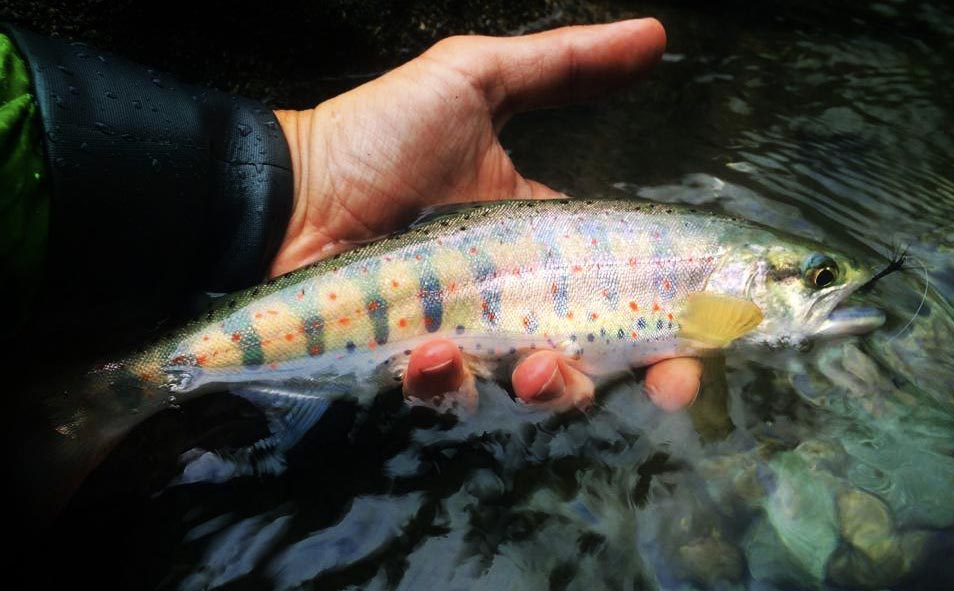
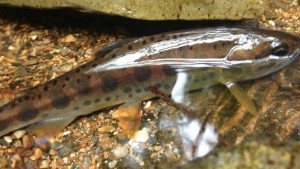
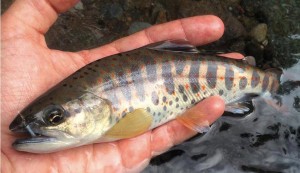
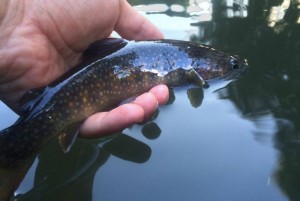
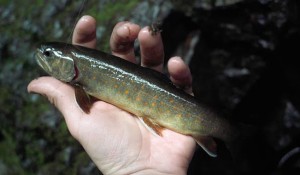
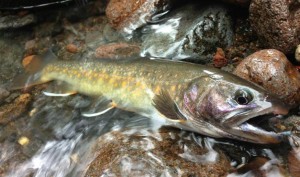
Nice article on fishing in Japan. I made my trip because of you and found it to be mythical fishing… Thanks for spreading the word, our Japanese friends are excellent hosts.
Most excellent post. I love hearing about new and different species of trout/char that inspire future fishing trips.
As for your little yamame, sometimes the most beautiful things come in small packages.
Cute fish.good info
Pingback: Japan's Cherry Salmon
Pingback: Golden Week- Part 2 – Book in Mouth
I was stationed at Misawa Air Base from 94-97. I used to fly fish the streams between Misawa and a place called Red Bridge and camping spot we used to camp at. I have caught many beautiful yamame ranging between 6 and 12 inches in the 3 years I was stationed there. All with Dry flies, wets, nymphs and streamers. I even used some Eastern North American Fly Patterns while fishing and still caught beautiful trout. I would return to Japan in a heart beat to fish the northern streams.
Is the typical of the Northern Island as well? I have been up there quite a bit and have always looked to the rivers with great interest, lots of Eagles and supposedly big ass bears! I was kind of the impression the had some real big trout up there, lots of rainbows I always assumed. To say nothing of the salmon runs.
Ive got to get over there sometime, ts wild country.